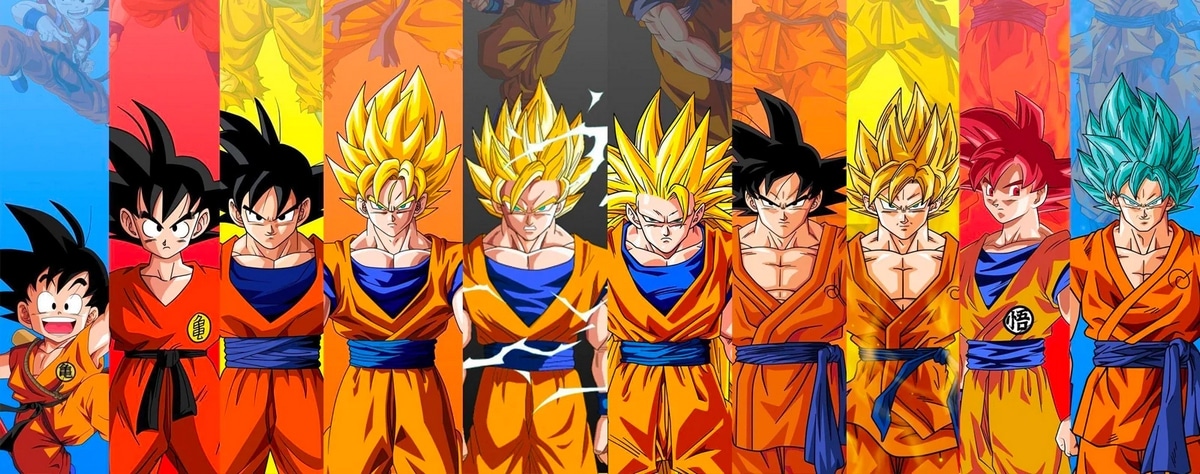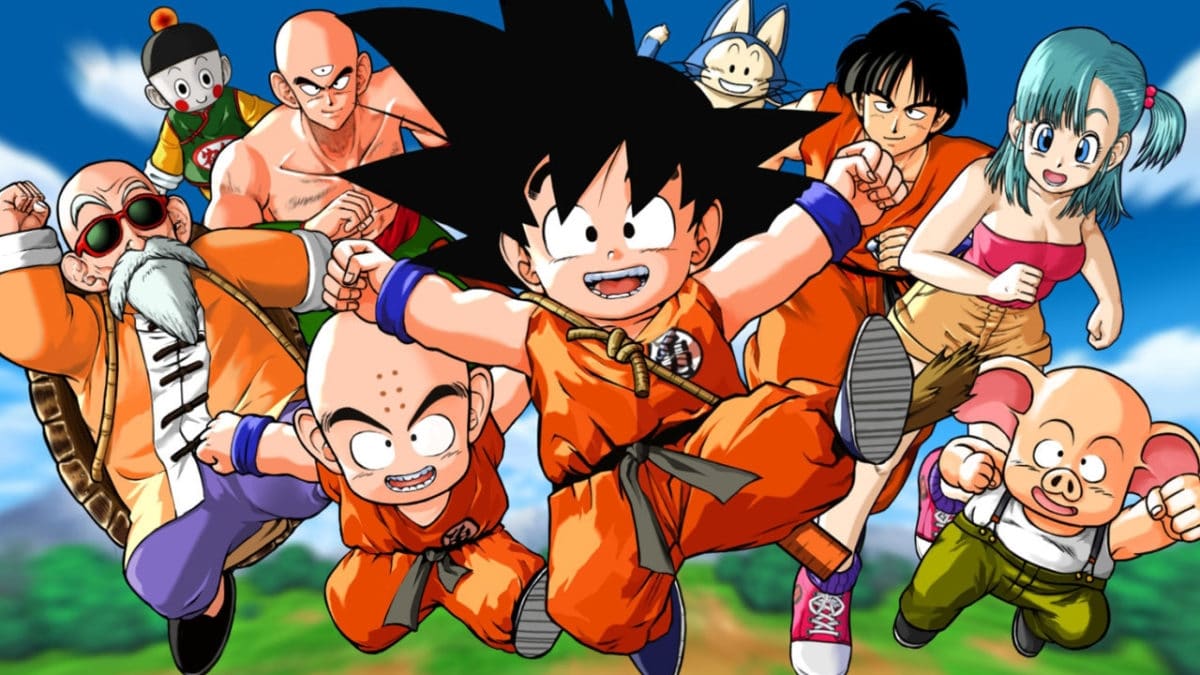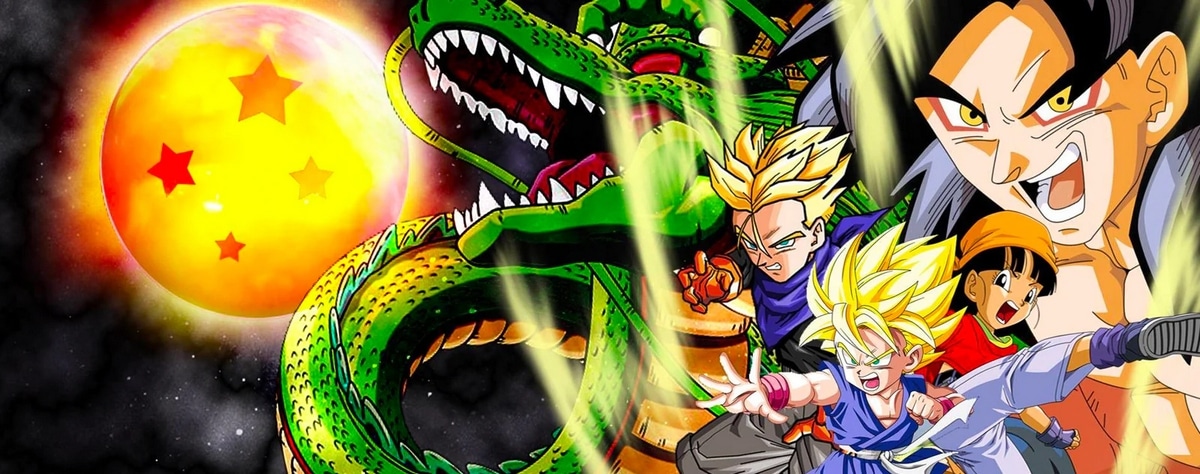Dragon Ball is a Japanese animated series that has marked generations of fans around the world. Created by Akira Toriyama, it recounts the adventures of Goku, a young boy with a monkey tail and extraordinary strength, who sets off in search of the seven crystal balls, capable of granting any wish. Along the way, he makes friends, confronts enemies and discovers his alien origins. He becomes the most powerful warrior in the universe, capable of transforming into a Super Saiyan, a superhuman form with golden hair. The Dragon Ball franchise includes over 500 episodes, divided into several series: Dragon Ball, Dragon Ball Z (DBZ), Dragon Ball GT, Dragon Ball Z Kai and Dragon Ball Super. There are also over 20 films, as well as OVAs (Original Video Animations) and special episodes. With so much content, it's not easy to know where to start, or in what order to watch it. That's why we've put together this guide to help you get the most out of this cult manga.

Chronological order

First of all, it's worth noting that Toei Animation is the studio that produced all the animated series and films adapted from Akira Toriyama's manga.
Chronological order means watching the series and films in the order in which they take place in the Dragon Ball story. This order allows you to follow the progression of the characters, understand the stakes and consequences of events, and avoid spoilers. Chronologically, it goes like this:
- Dragon Ball (1986-1989): the first series, which follows Goku's beginnings, from his meeting with Bulma to his marriage to Chichi.
- Dragon Ball Z (1989-1996): the direct sequel to Dragon Ball, focusing on battles against enemies from outer space, such as the Saiyans, Freezer, Cell and Boo.
- Dragon Ball Z: Baddack versus Freezer (1990): a special episode recounting the past of Goku's father, Bardock, and his confrontation with Freezer.
- Dragon Ball Z: The Story of Trunks (1993): a special episode recounting the alternate future of Trunks, the son of Vegeta and Bulma, who travels back in time to change the course of history.
- Dragon Ball Super (2015-2018): the latest series, following on from Dragon Ball Z and introducing new adversaries such as Beerus, the god of destruction, and Jiren, the strongest warrior in the universe.
- Dragon Ball Super: Broly (2018): the latest film to date, taking up the character of Broly, a legendary Saiyan with outsized powers, and reintegrating him into official continuity.
- Dragon Ball GT (1996-1997): a spin-off series set after Dragon Ball Z, featuring Goku as a child again, accompanied by Trunks and Pan, his granddaughter.
- Dragon Ball: The Way of the Strongest (1996): a film based on the first Dragon Ball episodes, with more modern animation and a few changes to the storyline.
- The other films: there are 17 other films based on the Dragon Ball universe, which are not part of the official continuity and can be considered as alternative stories. They can be viewed at any time on disney +but it's best to have seen at least the Dragon Ball Z series to avoid confusion.
Output order

Release order means watching series and films in the order in which they were broadcast in Japan. This order allows you to discover the works as they were conceived by their authors and appreciated by their original audience. You'll be able to admire the evolution of animation, graphic style and music. You can also enjoy the winks and references to previous works. Here's the list of series and films in release order:
- Dragon Ball (1986-1989): the first series, which follows Goku's beginnings, from his meeting with Bulma to his marriage to Chichi.
- Dragon Ball: The Legend of Shenron (1986): the first film, based on the first episodes of the series with a few modifications.
- Dragon Ball: Demon's Castle (1987): the second film, featuring a new adventure for Goku and his friends in a haunted castle.
- Dragon Ball: L'Aventure mystique (1988): the third film, which continues the martial arts tournament arc with a few changes.
- DBZ (1989-1996): the direct sequel to Dragon Ball, focusing on battles against enemies from outer space, such as the Saiyans, Freezer, Cell and Boo.
- Dragon Ball Z: In Pursuit of Garlic (1989): the first film in the Z series, which pits Goku and Piccolo against Garlic Jr, an evil being who wants to get his hands on the crystal balls.
- Dragon Ball Z: The Ice Robot (1990): the second film in the Z series, pitting Goku and his friends against Freezer's brother Cooler, who seeks revenge for his death.
- Dragon Ball Z: Fratricidal Combat (1990): the third film in the Z series, pitting Goku and his friends against Slug, an evil Namek bent on subjugating the Earth.
- Dragon Ball Z: The Menace from Namek (1991): the fourth film in the Z series, pitting Goku and his friends against Cooler, who has returned in a more powerful form.
- Dragon Ball Z: Baddack versus Freezer (1990): a special episode recounting the past of Goku's father, Bardock, and his confrontation with Freezer.
- Dragon Ball Z: Revenge of Cooler (1991): the fifth film in the Z series, pitting Goku and his friends against Metal Cooler, a robotic version of Cooler.
- Dragon Ball Z: One Hundred Thousand Metal Warriors (1992): the sixth film in the Z series, pitting Goku and his friends against an army of Metal Coolers on the planet Namek.
- Dragon Ball Z: Cyborg Offensive (1992): the seventh film in the Z series, pitting Goku and friends against C-13, C-14 and C-15, three cyborgs created by Dr. Gero.
- Dragon Ball Z: Broly the Super Warrior (1993): the eighth film in the Z series, pitting Goku and his friends against Broly, a legendary Saiyan with immense powers.
- Dragon Ball Z: Space Mercenaries (1993): the ninth film in the Z series, pitting Goku and his friends against Bojack, a space pirate bent on galactic conquest.
- Dragon Ball Z: Dangerous Rivals (1994): the tenth film in the Z series, pitting Goku and his friends against Broly, back in fiercer form.
- Dragon Ball Z: Super Warrior Attack! (1994): the eleventh film in the Z series, pitting Goku and friends against Bio-Broly, a mutant version of Broly.
- Dragon Ball Z: Fusions (1995): the twelfth film in the Z series, which pits Goku and Vegeta fused into Gogeta against Janemba, a monster born of evil accumulated in the afterlife.
- Dragon Ball Z: Attack of the Dragon (1995): the thirteenth film in the Z series, pitting Goku and his friends against Hildegarn, an evil dragon released by a sorcerer.
- Dragon Ball Z Kai (2009-2015): a remastered and shortened version of Dragon Ball Z, faithfully following the original manga and removing filler scenes.
- Dragon Ball Super (2015-2018): the official sequel to Dragon Ball Z, introducing new story arcs such as the Battle of the Gods, the resurrection of Freezer, the Tournament of Power and the Trunks saga of the future.
- Dragon Ball DAIMA (2024 -): the last series to be announced, set after Dragon Ball Super, featuring new adventures for Goku and friends, facing new enemies and mysteries linked to the Universal Force.
Whether you choose chronological or release order, you'll be able to enjoy the adventures of Goku and his friends, as they battle the forces of evil with courage and humor. You can also discover the different versions of the story of Broly, the green-haired Saiyan warrior who appears in several of the franchise's films. Whether you're a die-hard fan or a curious novice, we hope you enjoy the game.
Find out more about other anime such as Naruto and discover In what order should you view it?






